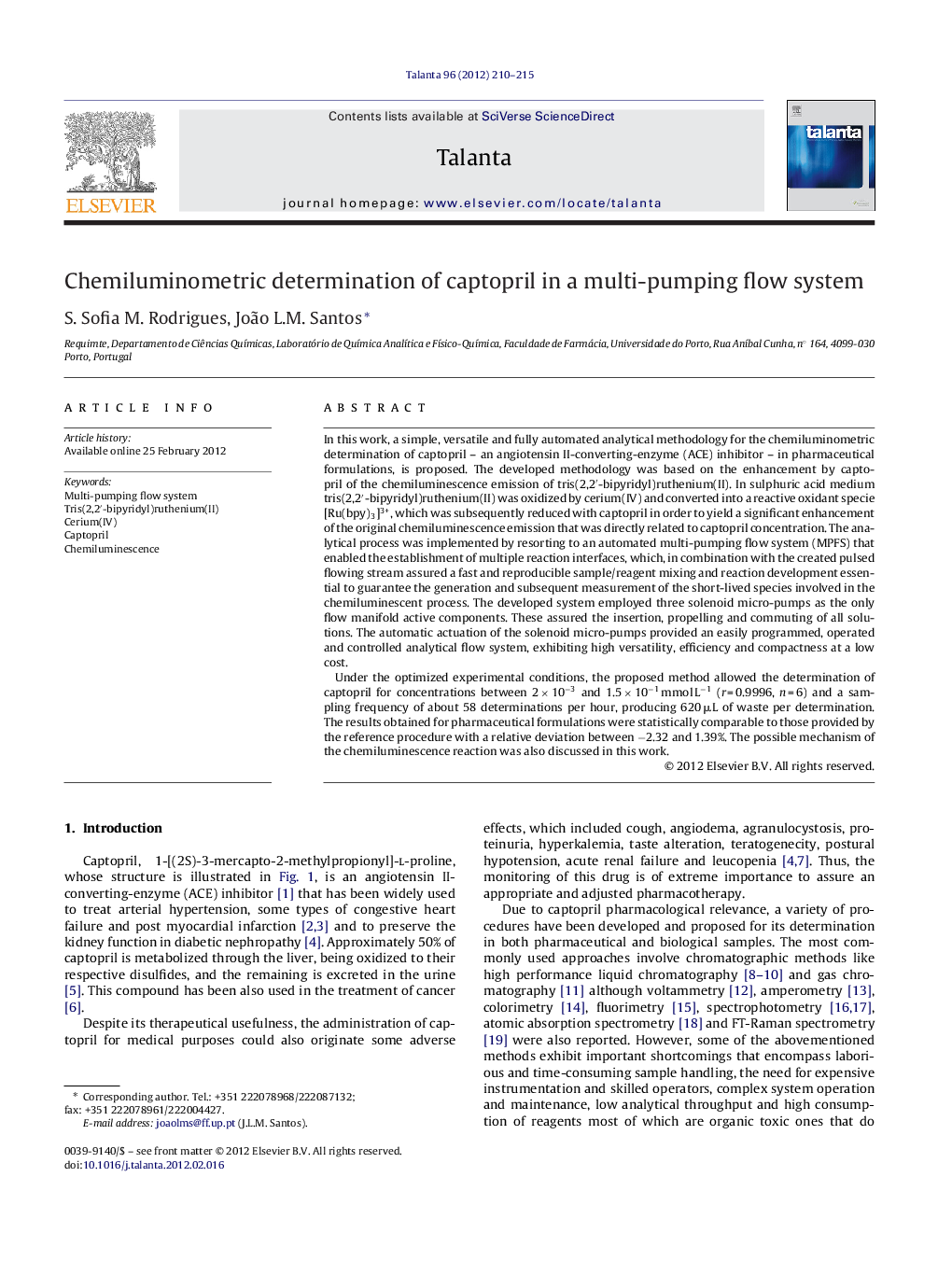| Article ID | Journal | Published Year | Pages | File Type |
|---|---|---|---|---|
| 1243195 | Talanta | 2012 | 6 Pages |
In this work, a simple, versatile and fully automated analytical methodology for the chemiluminometric determination of captopril – an angiotensin II-converting-enzyme (ACE) inhibitor – in pharmaceutical formulations, is proposed. The developed methodology was based on the enhancement by captopril of the chemiluminescence emission of tris(2,2′-bipyridyl)ruthenium(II). In sulphuric acid medium tris(2,2′-bipyridyl)ruthenium(II) was oxidized by cerium(IV) and converted into a reactive oxidant specie [Ru(bpy)3]3+, which was subsequently reduced with captopril in order to yield a significant enhancement of the original chemiluminescence emission that was directly related to captopril concentration. The analytical process was implemented by resorting to an automated multi-pumping flow system (MPFS) that enabled the establishment of multiple reaction interfaces, which, in combination with the created pulsed flowing stream assured a fast and reproducible sample/reagent mixing and reaction development essential to guarantee the generation and subsequent measurement of the short-lived species involved in the chemiluminescent process. The developed system employed three solenoid micro-pumps as the only flow manifold active components. These assured the insertion, propelling and commuting of all solutions. The automatic actuation of the solenoid micro-pumps provided an easily programmed, operated and controlled analytical flow system, exhibiting high versatility, efficiency and compactness at a low cost.Under the optimized experimental conditions, the proposed method allowed the determination of captopril for concentrations between 2 × 10−3 and 1.5 × 10−1 mmol L−1 (r = 0.9996, n = 6) and a sampling frequency of about 58 determinations per hour, producing 620 μL of waste per determination. The results obtained for pharmaceutical formulations were statistically comparable to those provided by the reference procedure with a relative deviation between −2.32 and 1.39%. The possible mechanism of the chemiluminescence reaction was also discussed in this work.
